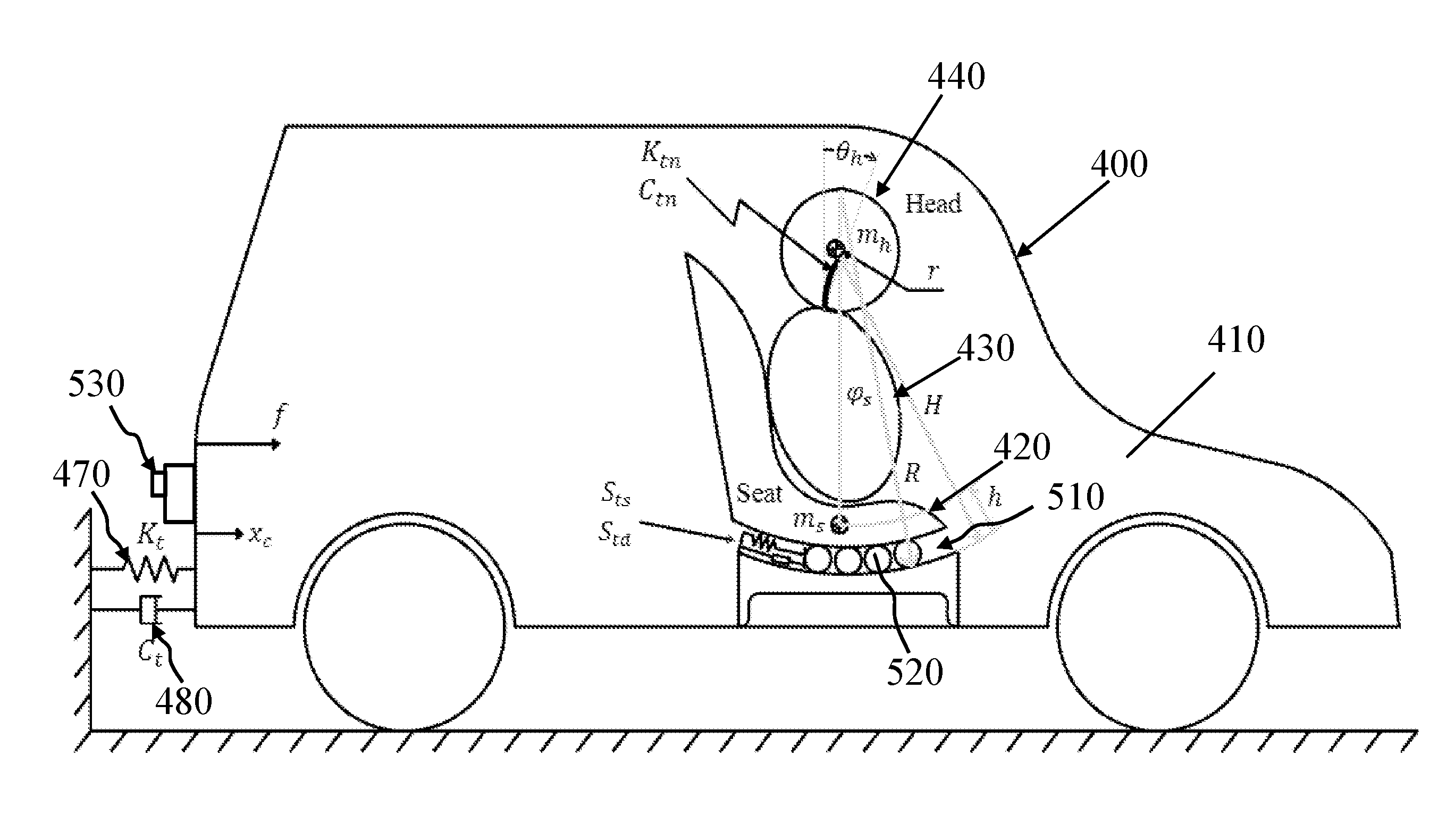Safety device for vehicle seats
a safety device and vehicle seat technology, applied in the field of vehicle seats, can solve the problems of long partial disability, limited effectiveness of vehicle seat safety devices, neck injuries in traffic accidents, especially non-severe rear impact accidents, etc., and achieve the effect of reducing whiplash injuries
- Summary
- Abstract
- Description
- Claims
- Application Information
AI Technical Summary
Benefits of technology
Problems solved by technology
Method used
Image
Examples
Embodiment Construction
[0021]The presently disclosure aims to overcome drawbacks in the above described conventional car safety devices.
[0022]The whiplash mechanism is modeled using a linear spring and dampers to represent the head and neck of a human body sitting in a standing car. The movements of the head and the neck are caused by a rear impact to the standing car. Two cases have been modeled; a car seat without whiplash control mechanism; and a car seat installed with an invention whiplash control mechanism.
[0023]Referring to FIG. 1, a conventional car 100 without whiplash control includes simplified mass blocks for a car body 110, a seat 120, an upper body 130, a head 140, a seat spring 150, a seat damper 160, a tire spring 170, and a tire equivalent damper 180.
[0024]In the present disclosure, the conventional car without whiplash control and the vehicle installed with the invention whiplash reducing device are modeled.
[0025]The following parameters are chosen in simulations of the conventional car ...
PUM
 Login to View More
Login to View More Abstract
Description
Claims
Application Information
 Login to View More
Login to View More - R&D
- Intellectual Property
- Life Sciences
- Materials
- Tech Scout
- Unparalleled Data Quality
- Higher Quality Content
- 60% Fewer Hallucinations
Browse by: Latest US Patents, China's latest patents, Technical Efficacy Thesaurus, Application Domain, Technology Topic, Popular Technical Reports.
© 2025 PatSnap. All rights reserved.Legal|Privacy policy|Modern Slavery Act Transparency Statement|Sitemap|About US| Contact US: help@patsnap.com



